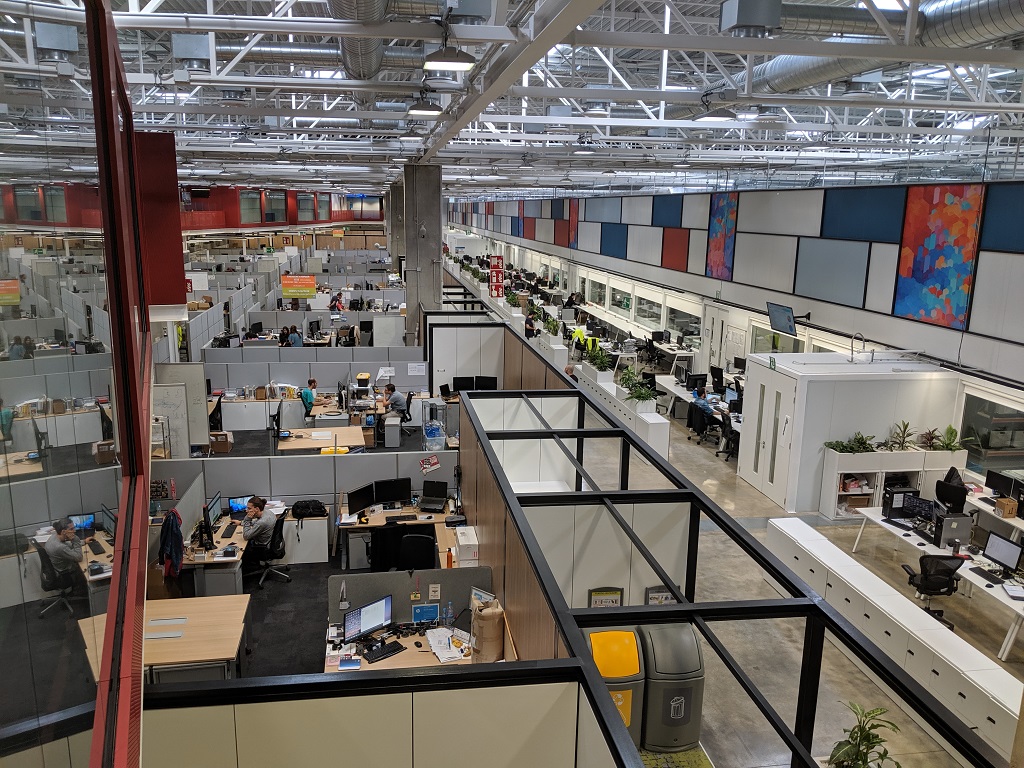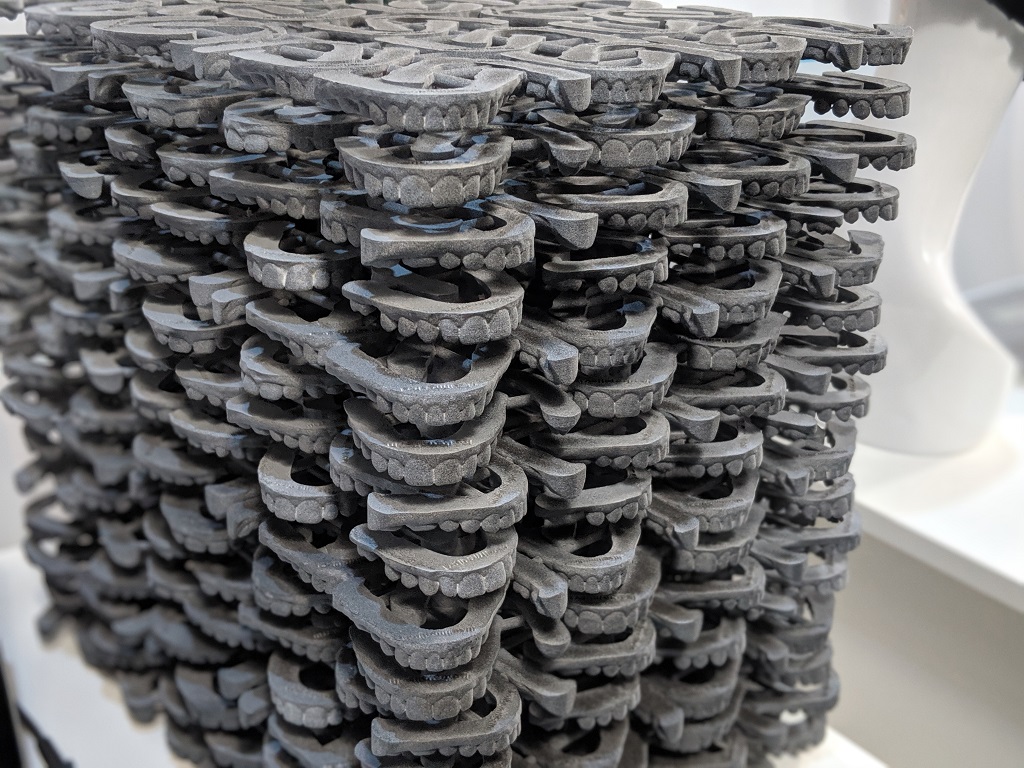
Guayente Sanmartin, the new Global Head & General Manager of the HP 3D Multi Jet Fusion Business, shares insights into the latest structuring and strategies in MJF.
Sanmartin’s position has just been announced. She will be taking on the role from HP 3D printing veteran Ramon Pastor, who will be moving to head the metals side of the 3D printing business. Further, the entire HP Personalization & 3D Printing business has welcomed a new president in Didier Deltort. As always, new appointments in key leadership roles mean new strategic shifts.
MJF looks to be in excellent hands as Sanmartin will head technology, operations, commercial, and new business incubation activities, leading the teams in Barcelona, Corvallis, Vancouver, and San Diego. With HP since 1991, Sanmartin was most recently the VP & GM of the Large Format Organization. She brings not only business savviness and acumen, but what her colleagues call a fierce dedication to diversity, equity, and inclusion.
There’s a lot to celebrate in her appointment as HP continues to pave its path in 3D printing — and what better way to learn more about what this means for the company than right from the source? We catch up with Sanmartin in this exclusive Q&A.
Sarah Goehrke: How did this new leadership role take shape? Why you, why now for HP?
Guayente Sanmartin: “More than three decades of my life have been with HP managing global multi-billion-dollar businesses all over the world from Print to Personal Systems, and now with 3D printing. I have always been optimistic that technology can do the impossible and solve some of the world’s most pressing issues while challenging us to think differently. That’s why I am so proud to be where I am now, leading the HP Multi Jet Fusion 3D printing business and being the bridge for the 3D Printing Commercial, Hardware, Software, Materials, Operations, and New Applications Incubations teams. More than 60 million parts have now been 3D printed with HP Multi Jet Fusion, and we see strong double-digit annual growth in parts produced. Every day we see more traction and more mature applications in industries like automotive, consumer goods, industrial sectors, healthcare, and many others. HP is already such a strong leader in the market, leading industrial solutions with customers across the world, but now is the time to accelerate impact.
At the same time, I am one of many strong leaders working with passionate teams to bring HP’s vision to life. My colleague, Ramon Pastor, another longtime HP employee, and one of our earliest 3D pioneers of the 3D printing business will now lead HP metals and look to accelerate the Metal Jet path to market. Ramon has done so much to advance the digital manufacturing sector and the team at HP, and I’m lucky to be working alongside him and Didier Deltort, our incoming President of Personalization & 3D Printing. I know we all have big plans for how the business will continue to drive even more collaboration and bigger outcomes.”

SG: Last year I spoke to Annette Friskopp and was impressed by HP’s savviness when it comes to sharing across teams internally to drive greater efficiencies and better business outcomes. Not just sharing knowledge, but people and experiences. It seems in this case HP has done it again – what prior HP expertise, learnings, experiences do you believe will best contribute to growing HP’s Multi Jet Fusion business?
GS: “In my most recent role leading large format printing for HP, we primarily sold printers to engineers, architects, and print service providers. Each of those groups had very specific needs yet we were able to bring them technology that could adapt to them no matter what. But we wanted more. And when we created an entirely new category with HP Latex, we realized that our work was not just relevant for the printing market, but for the whole communications industry. We focused on helping our Print Service Providers (PSPs) better connect with their customers and offer endless applications that are having a real impact on end users. For example, hospitals can personalize patient rooms and spaces to improve the experience or print signage with
current health guidelines that were regularly being updated during the pandemic.Whether you talk about large format printing or 3D printing, there is not just one definition for what it can do. Because, in the end, only purpose-driven innovation for a better world is what matters. It could be upending the consumer sports market by giving athletes the opportunity to customize their equipment for the first time. It could be redefining the auto industry by giving a car owner the ability to keep their beloved, older car model on the road with on-demand replacement parts. It could be personalizing healthcare and helping people live better, more mobile lives with custom orthotics, prosthetics, and braces. The principles of how we enable these dreams don’t change. I just change how I apply them.”
SG: What are your most urgent priorities?
GS: “We see the challenges that exist in the world very clearly, especially after this year. Entire supply chains as well as markets including auto, consumer goods, industrial, healthcare — wherever you look, there is an opportunity to disrupt. I am focused on showing our customers what is possible when we truly look outside traditional manufacturing and what has always been done. To do so will require driving the technology platform that enables our end-to-end applications businesses while incubating high-value, transformational 3D applications at a mass scale.”
SG: Why do you believe 3D printing will be particularly relevant in 2021?
GS: “People around the world are not the same as we were one year ago because of the COVID-19 crisis. Our societies are different. How we work, live, and buy things is different. The positive thing to come from this is that we are more used to change, and we are open to having new experiences. Businesses know they cannot go back. Instead, they are looking for bold ways to move forward. One area almost every business leader is looking at right now is their supply chain. Companies need more diversification with an emphasis on localized, on-demand production. They need more flexibility to bring products to market faster. This year, 3D printing will help countless industries reinvent themselves and become more resilient. But it’s much greater than 2021. I believe 3D printing will be one of the biggest catalysts for innovation in this century.”
SG: With sustainability at the forefront of our industry, how are you thinking about innovation through this lens?
GS: “Two driving forces shape the way businesses design, iterate, and manufacture parts and products: the first is that consumers demand sustainability, the second is that they want personalized goods at a competitive price. 3D printing is the only manufacturing process that can do both. A great application of this, and one I hope to see much more of in the future, is HP’s work with SmileDirectClub. Our 3D printing technology allows them to produce millions upon millions of uniquely personalized mouth-molds for each of their customers. Literally, no two parts are the same. They have built one of the largest 3D factories in the world with our technology and transformed their industry.
Not only does the solution enable mass production of personalized goods at a fraction of the price for SmileDirectClub users, but we also recycle the leftover molds and turn them into pellets to be used by other customers for automotive parts. This helps to keep the materials in use for as long as possible instead of being shipped to the landfill.
This is the type of creative thinking that can push boundaries. We are creating a new value chain where sustainability is built in so that we open up opportunities for even more advancements and can drive a more circular economy.”

SG: What excites you most about 3D printing as you move into this industry?
GS: “There is still so much work to be done to realize the full potential and value of 3D printing, but I’m so excited about the opportunity the industry has to make a pointed impact on the world. The opportunities are limitless. It was so apparent from the start of the pandemic, and continues today, with 3D printing playing a critical role filling gaps caused by traditional processes. But, also, the way things are getting done, a true global effort. It has been so promising to see HP employees along with our partners and customers around the globe coming together to design and produce parts for hospitals to fight against COVID.
HP also believes strongly in our commitment to sustainable impact. This is a major focus for the entire company. Specific to 3D printing and the auto industry, we are working with major players like Ford and Nissan, to become more sustainable and improve the circular economy. We can extend that to other industries like packaging, with the introduction of 3D printing to molded fiber tooling, we are helping countless companies reduce their single-use plastics. These are just a few examples of how this industry can confront challenges and deliver fast and effective solutions. I am more than excited to be at the forefront of transformation for our customers and manufacturing sector as a whole.”
SG: What is HP doing to continue to advance more women and women leaders in technology, specifically 3D printing?
GS: “Helping women to thrive is also one of my passions. In all the HP sites where I have worked, I have actively participated either in the creation or in the development of the Women Networks. I truly believe that we cannot innovate with purpose without women, since they represent 51% of the world’s population. And it is a fact that the representation of women in STEM careers is still low, in many countries.
Advancing diversity, equity, and inclusion make our business stronger, and HP is committed to increasing the representation of women, particularly in leadership and technical roles. Last year in fact, women made up 27.6% of HP’s new global hires in technical roles.
HP also has 123 Business Impact Networks, including a 3D Printing Network of Women established to support women in the 3D print business. The group’s mission is to inspire women to pursue a career in this industry, giving them tools to do so. The network has created an environment for awareness building, information-sharing, and career advancement opportunities that are so important for this field. Diversity creates empathy and helps us bring new ideas into this world. We must be genuine in how we approach this because it is how we serve our customers and improve lives.”
SG: Despite the challenges and limitations that all industries have faced, HP’s digital manufacturing team has pivoted and remained nimble to meet the goal of accelerating production. Anything exciting coming up you’d like us to know about?
GS: “Yes, this year has been a challenge. But the struggle has not been felt equally by all. As I think about what it will take for us to rebuild and recover together, I remember that challenges must occur for solutions to be born. It is the time for bravery, optimism, and creativity. Leaders and companies cannot stay silent on climate action, human rights, and digital equity if we want real change to happen. HP’s commitment to innovation and fostering meaningful customer relationships and partnerships for long-term sustainable growth and positive social impact is one I firmly stand behind. Our integrity depends on the actions we take now. This is how HP was able to still achieve so much and help our customers evolve during such a challenging time.
In HP’s Digital Manufacturing Trends Report we saw that moving the manufacturing industry forward will come from paying close attention to the larger trends at play. We must invest and stay curious to spur growth and evolve supply chains, personalization, sustainability, and more. We are committed to helping every industry believe in and print what seems impossible. We will do this by creating solutions and products for our customers that also spark positive change for the world around us. You can expect us to share many more actionable insights and tools that help push forward 3D printing’s story and solidify HP’s foothold as an industry leader.”
Welcome to leadership in MJF — and in the 3D printing industry — Guayente!
Via HP
